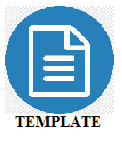Submissions
Submission Preparation Checklist
As part of the submission process, authors are required to check off their submission's compliance with all of the following items, and submissions may be returned to authors that do not adhere to these guidelines.- Naskah belum pernah diterbitkan sebelumnya, dan tidak sedang dalam pertimbangan untuk diterbitkan di jurnal lain (atau sudah dijelaskan dalam Komentar kepada Editor).
- File naskah dalam format dokumen OpenOffice, Microsoft Word, atau RTF.
- Referensi yang dapat diakses online telah dituliskan URL-nya.
- Naskah diketik dengan teks 1 spasi; font 12; menggunakan huruf miring, bukan huruf bergaris bawah (kecuali alamat URL); dan semua ilustrasi, gambar, dan tabel diletakkan dalam teks pada tempat yang diharapkan, bukan dikelompokkan tersendiri di akhir naskah.
- Naskah mengikuti aturan gaya selingkung dan bibliografi yang disyaratkan dalam Panduan Penulis.
Copyright Notice
Authors whose manuscripts are published will agree to the following terms:
The right to publish all journal materials published on the journal website COURT REVIEW, e-ISSN: 2776-1916 is held by the editorial board with the knowledge of the authors (moral rights remain with the authors).
The formal legal conditions for accessing digital articles of this electronic journal are subject to the terms of the license Creative Commons Attribution-ShareAlike (CC BY-SA),
which means that the COURT REVIEW Journal has the right to store, change formats, manage databases, and maintain and publish articles without asking permission from the Creator as long as the Creator's name is maintained as the Copyright owner.
Manuscripts printed and published electronically are open access for educational, research, and library purposes. In addition to these purposes, the editorial board is not responsible for any violation of copyright laws.
Privacy Statement
The names and email addresses entered in this journal site will be used exclusively for the stated purposes of this journal and will not be made available for any other purpose or to any other party.








